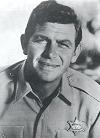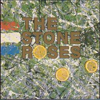The SleepTracker is an interesting little gadget. It's primary function is to wake you up in the morning. It looks and fits like a big watch. It contains a component called an accelerometer. It knows when your hand moves.
Any easy way to tell how deeply a person is asleep is by how much they move. A person who is awake or nearly awake moves quite a bit. A person who is deeply asleep does not move at all.
By keeping up with how often your hand moves, the SleepTracker is able to determine "near awake" moments -- moments when you are only lightly asleep.
Let's say you normally get up at 8:00 AM. You set the SleepTracker for an alarm time of 8:00 AM and for a "window" of 45 minutes. It will start looking for a near awake moment at 7:15. As soon as it finds one, it will start buzzing. (If you don't have a near-awake moment before 8 then the buzzer just goes off at 8.)
The theory is that it will pick a moment when you are closest to being awake, allowing you to be more refreshed when you wake up.
Oddly enough, it seems to work. It consistently picks good moments to wake me up.
Now if you are having some trouble sleeping from something like say, sleep apnea, then you might not have a near awake moment during the window and the buzzing on your hard might not be enough. Keep a backup alarm set if you have an important meeting, but I think you'll be surprised at just how well thing works.
Now I'll admit my little secret. I didn't buy it to wake me up. I bought to find out more about my sleep patterns.
If you look at this page you can see an illustration of sleep cycles through the night:
http://www.sleeptracker.com/how-it-works.html
In using the watch it's important to understand a little about sleep cycles so you know what you are looking for.
At one point I had a dilemma. My AHI was under 5 but I still felt like hell. So I needed an answer to an important question. Did I feel like hell because I was sleeping poorly or was it the dreaded "something else"? I mean if it's not a sleep problem then it could be anything - blood sugar, lyme disease, beri-beri, primary myofractral cardyitis -- all maladies that I didn't have an Internet support board for.
The SleepTracker Pro keeps track of the near-awake moments for the entire night and lets you review them in the morning. You can do it on the display of the watch or download it to the computer.
I thought that I could track the time between the near-awake moments as get a sense of how I was sleeping. A short duration between near awake moments would mean fitful, disturbed sleep. Long intervals would mean good sleep.
It answered my question very well. If I felt good in the AM then what I saw on the watch was several long quiet intervals in the early part of the night. If the intervals were all mostly short (30 minutes or so) then I felt like hell.
And once I got an oximeter, things got really interesting. I marked the near-awake moments on the heart rate graph. This let me begin to see the sleep cycles in the heart rate data. By bringing in breathing events from the PAP machine reports I could then see the apnea events wreck my sleep patterns.
I'm still learning, but it is very interesting. If you are a "sleep tweak" then you'll like this gadget.
I wouldn't run right out and get this thing unless you had some other things first. Get a data-capable machine and a mask that works for you. Get an oximeter. And a video camera is very useful as well. If you still have some pennies left over, then pick up one of these.
There are two models. The more expensive SleepTracker Pro ($179) collects 12 hours of sleep data and lets you download the data to your PC. It has a vibrating alarm. This is the one I got. It is well made and works as advertised.
The cheaper model ($149) records 8 hours only and you have to review it on the watch. It has only a beeping alarm. I can't speak for how well this one works.
Manufacturer's web site:
http://www.sleeptracker.com/











